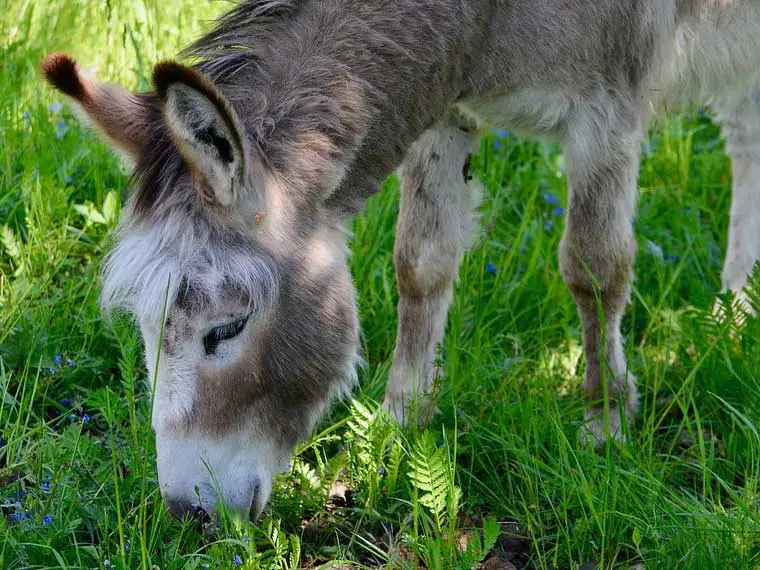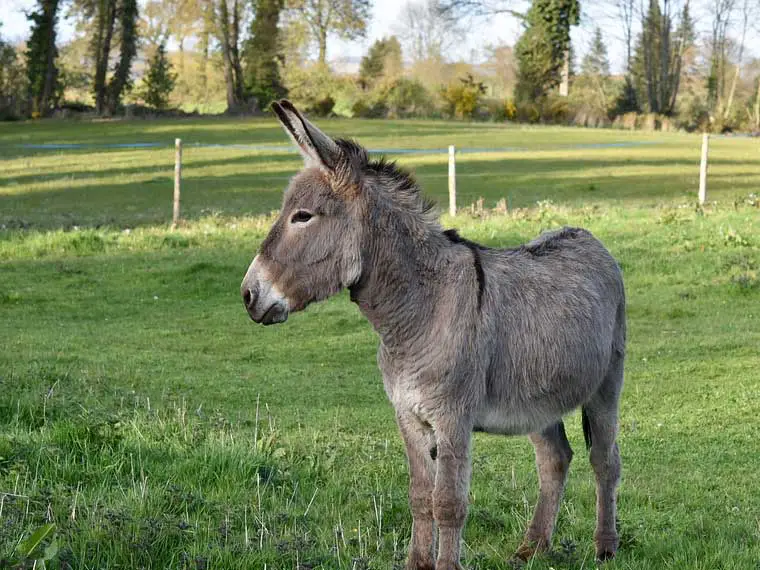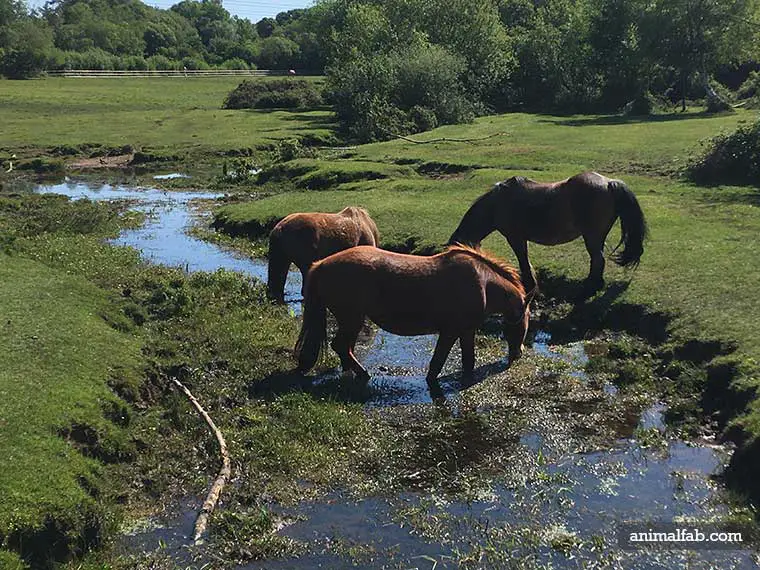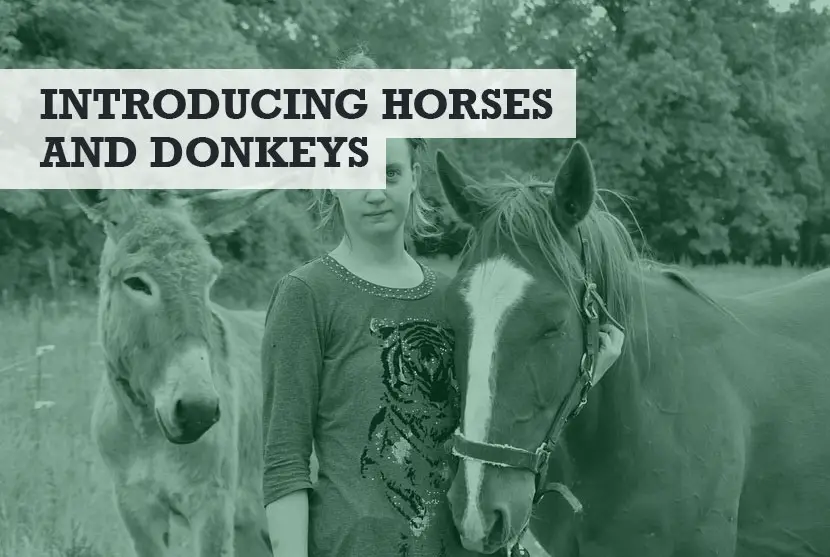As with any animals, introducing a new character into the mix should always be done with a degree of caution. Introducing donkeys and horses is no different.
Donkey introductions take time, regardless of the species that is being introduced, this could be another donkey, a horse, goats or ducks. Factors such as the donkey’s personality, history and age need to be taken into consideration.
Here’s a short guide on how to introduce a donkey to horses so you can minimise the risk of anything dangerous happening.
Introducing donkeys to horses
Donkey sanctuaries recommend a step-by-step approach to the introductions which should be taken slowly. This process could take place over a period of weeks or even months. It will require diligent supervision and monitoring where the two animals are sharing the same space.

The donkey to horse introduction process is more complicated if the donkey is being introduced to a new environment as well as new companions. If more than one of either or both species is being introduced, the introductions need to be done individually.
Horses and donkeys can experience stress if introductions are mishandled. In the case of the donkey, I have heard of a fatal incident where the donkey died from stress. However, sometimes a horse and a donkey be the perfect companions to actually alleviate stress – but only once the introduction has been a success.
Donkeys are generally best kept with a companion and tend to form strong bonds. These companions tend to be other donkeys but can include other animals such as horses, ponies, mules, or other species. Removal, death, or euthanasia of a companion can cause considerable stress to a donkey which can lead to inappetence and stress induced hyperlipaemia.
Clyde Vet Group, https://www.clydevetgroup.co.uk/post/stress-in-donkeys
A slow introduction
Settling in
The first thing to remember when introducing horses and donkeys is to do nothing for the first two days. The animals should be in separate enclosures, out of sight of each other.
For these first 48 hours, it is advisable to keep the introductions to all animal species to a minimum, including human contact. Manage expectations in the household. Prepare members for a long, drawn-out process.
If the donkey has been transported, it will need to rest after standing for hours in a moving van. It will want to be shown where its food, water points and bedding are. Think of it as a kind of donkey induction.
When a donkey is being introduced to a new environment where horses are present, it will want to sensitise itself to its enclosure, in terms of size, shelter, and especially smells. The same applies to most animals.
Try to minimise the number of changes by keeping to the animal to the same diet as before. Be aware that water quality and tastes differ across regions. It might be a nice touch to bring a few days’ supply from the old water source.
Engage all your donkey’s senses. Encourage it to explore the environment by spreading a few treats around the encampment. Keep these within the donkey dietary restrictions.

At first sight
The next step is to let the donkey and horse see each other but to have no physical contact. You can feed and groom them within sight of each other.
Another trick is to spread donkey manure in the horse enclosure and vice versa so that they can get the information they need before meeting face to face.
You could also allow them to explore the other’s enclosure without the other animal being present. Allow the donkey and horse to sniff, roll and leave deposits, including scents, in the other’s territory.
If your donkey is not used to being handled, this period can be used to teach it to be caught, tethered, and led.
Physical contact between the animals should be done so at a distance so that neither animal can do damage to the other. Employ electric fences or double fences to keep them at arm’s length.
Before introductions
Prepare the environment in which the donkey and horse will meet with safety in mind. For example, increase the number of feeding and water points so that there is no contention for these resources.
Make sure that there are escape routes for the animals, and that entry and exit points are wide enough to prevent unnecessary contact. Provide enough personal space, in the shelter and shade, for each animal to feel comfortable.
Introduction under supervision
Ideally, the introduction of the donkey to the horse proper should take place in neutral territory. If there is more than one of either or both type of animal, do the introductions one by one.
Once they have had an opportunity to sniff and size each other up, you can follow up with other joint activities under supervision. Take the animals for tethered walks together or groom them separately but in the same space. This could be a neutral zone, or in one other of the animal’s camps.
Keep the animals separate at night.
Monitoring progress
Be sensitive to any undesirable behaviour and address the problem immediately. If you think you are moving too fast, slow down. You can even take a few steps back if necessary.
If problems persist, there are several donkey shelters around the world that can offer advice online or on site.
Both animals have long lives, and it is worth spending the effort to get the introductions right.
Once you feel that you can trust the animals together under supervision, it will be time to leave them alone for ever increasing periods of time.
Can donkeys get along with horses?
Yes, absolutely. Donkeys and horses will get along providing the introductions are done properly. However each animal should be treated as an individual.
Is a donkey a good companion for a horse?
Donkeys and horses can certainly make for brilliant companions. But the two animals are very different so you need to take different approaches with both. For example, they have different health requirements.
Bottom line is though, yes, donkeys and horses can live together happily and safely, but please be aware of the different care (e.g. de-worming) each will need.
Handy Hint: If you own a dog then I’d be very careful about getting a donkeys; they don’t always get along.
Do donkeys calm horses?
There are no studies to show that donkeys calm horses, but anecdotal evidence has shown that this can be the case. This is possibly due to the character of a donkey, as they tend to startle less than ponies and horses do.
That means the horse could follow a donkey’s lead and remain calm in situations where we might not otherwise.
Longer term issues – The nature of donkeys and horses
Both horses and donkeys are sociable creatures and should not be kept in isolation. Preferably, they should be given opportunities to bond with their own kind but there is sufficient anecdotal evidence to suggest that donkeys and horses can cohabit successfully.
Behaviour
There are more differences than similarities, however. Donkeys are more stoic and not easily frightened. They will stand their ground when being confronted whereas a horse will more likely be skittish and choose a flight response.
Donkeys and horses exhibit different body language. Donkeys are more inquisitive and indulge in more aggressive play – sometimes with that hee haw and braying noise.
They also display more sexual behaviour than horses. It is not advisable to pair an unneutered donkey with horses that have not been neutered or spayed. A donkey will not distinguish between a donkey and a horse in the mating season – they can actually mate together successfully.
Donkeys are often thought to make good guard animals in a barnyard. They will not back down in an encounter with a canine or other type of predator. They will make a noise, show their teeth, and deliver a nasty kick to any unwelcome intruder within a 6 feet radius of its behind.
The truth is that the donkey is guarding its territory, not necessarily the inhabitants therein. It may well prevent other occupants from accessing the food sources.
The horse, and other barnyard animals, will be reassured by the presence of the donkey and will feel more settled and safer from predators.
Food
Donkeys and horses require totally different feeds. If there is too much nutrition in a donkey’s diet, it will soon become obese and develop conditions such as kidney and liver disease, not unlike the effects of diabetes or insulin resistance in humans.
Laminitis is a common result of obesity in donkeys. It affects the animal’s hoofs, splitting them from the bone, and causing difficulty and pain when walking.
Included in the food that is off limits, is lush pasture. Donkeys are browsers, not grazers and should have access to bushes and tree bark. They need a great deal more fibre in their diets than horses – here are foods that are bad for donkeys you should print out.
Donkeys should also not have access to the licks left around for other livestock. They have different salt and mineral dietary needs.
Exercise needs
Chances are that your horse will have more need and opportunity for exercise. The horse and donkey may bond to such an extent that the horse’s departure, however short-lived, may cause the donkey separation anxiety and stress. The horse may even refuse to leave the donkey behind.

A solution may be to groom them in separate areas at the same time, or to take them for walks together and separately. Teach them that separation does not have dire consequences. Give both animals equal attention.
Age and longevity
If the donkey and horse are at different stages in their lives, they will have different needs. These could include exercise, dietary and medical needs.
Also be aware that donkeys tend to live longer than horses. Have a plan in place to deal with a grieving donkey if its friend dies.
Conclusion
Donkeys and horses can live in harmony. In fact, on the south coast of England, both donkeys and horses live together in the New Forest. You can’t drive across the heathland roads without seeing them together.
However, these donkeys and horses will have been introduced successfully first, and you should do this too for the best results.
You might also like…
- Here’s why horses love to roll around in the dirt and mud
- Why your donkey is crying at night
- How fast donkeys can run compared to horses
Image in header via https://pixabay.com/photos/donkey-horse-girl-portrait-woman-5151016/


